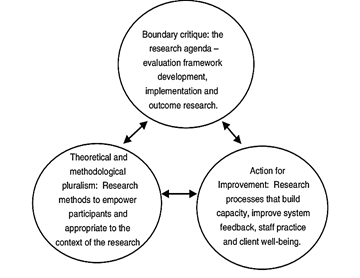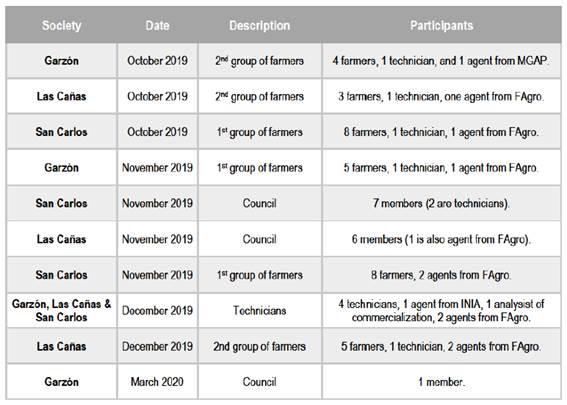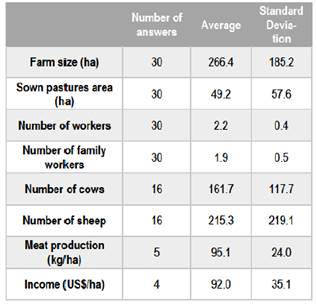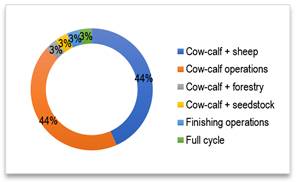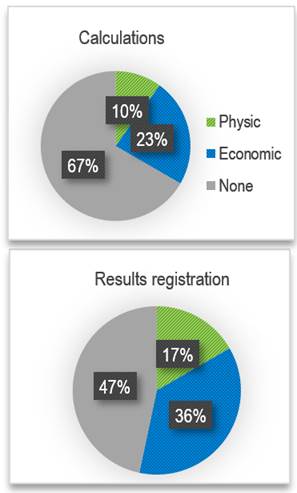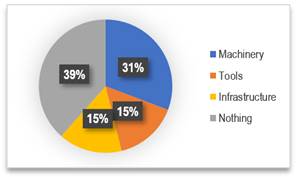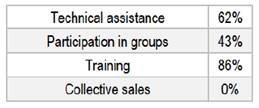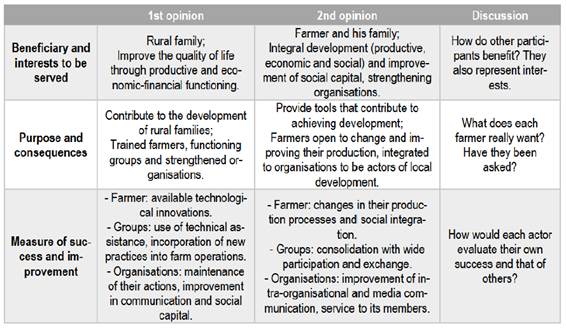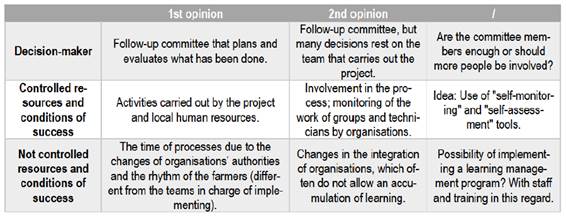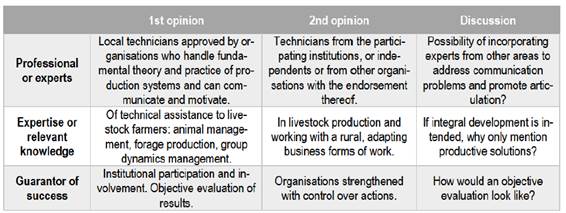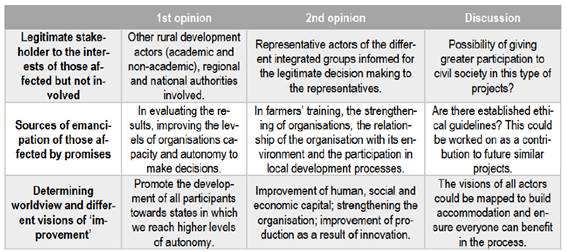1. Introduction
According to fao1, sustainable agricultural growth and rural development can be reached through the access to natural assets, technology, competitive fair markets, and the information and infrastructure required to participate in these markets. However, especially in developing countries, there is an unfulfilled potential in agriculture due to the premature stage of technology, existence of market imperfections, incorrect function of institutions and natural monopolies. Therefore, rural (or regional) development has been identified as a non-trade priority in the debates on agriculture.
Regions have become a focus for policy, among other reasons, because of their problems of high unemployment, short incomes, low educational achievements and low levels of service facility. In addition, globalisation and trade freedom have reduced the power of the nation state, making regions a relevant source of competitive advantage, for production, specialised knowledge and technological capacity2.
The processes of collective action and organisation of farmers constitute agents of rural development in territories. For Uruguayan livestock farming, particularly, collective strategies have been underutilized as a tool to overcome the structural limitations of productive factors and develop competitive advantages3. Currently, conceptual approaches recognize new meanings for rural extension. As Catullo and others4 postulate, in Latin America there is a new meaning and role for rural extension aimed at promoting collective action through knowledge, learning and coordination platforms, which facilitate innovations in regional and territorial development processes.
In 2017, an interinstitutional co-innovation project (named FPTA 343) for the sustainable development of family farming in the Southeast of Uruguay was implemented as a rural extension and development initiative, since it aimed to strengthen individual and collective capacities (by increasing knowledge of available technology, improving decision-making processes, creating technical spaces for discussion and promoting the use of technical assistance), and support Rural Development Societies, particularly referring to the application of shared technologies. The institutions involved were the Uruguayan Public University (Udelar), the National Institute of Agricultural Research (INIA) and the “Instituto Plan Agropecuario” (IPA).
Co-innovation5 refers to an approach that reunites 3 components: complex systems theory; collective social learning, including all actors involved in the process (researchers as well); and active project monitoring and evaluation to plan reorientation of family farms.
This study is part of the aforementioned project and focuses on 5 participating groups of family farmers, located predominantly in the influence areas of the Rural Development Societies of San Carlos, Las Cañas and Garzón, part of a larger region called Sierras del Este in the state of Maldonado, Uruguay. FPTA 343 was organized in 5 components: description of the regional innovation system; promotion of grouping and training of livestock producers; support for farmers’ organisations; improvement in their marketing processes, and implementation of a monitoring and evaluation system. Considering the advanced stage of the project in 2019, the contribution of our study relates to the last step.
According to Christoplos and others6, and considering the third component of the co-innovation approach, evaluating and monitoring is essential to the contribution of extension to rural livelihood. But how to assess the activities undertaken by an inter-institutional project for the sustainable development of family farming? For evaluators, a central question is whether the objectives were achieved; that is, do customers have greater control over their farms, businesses, and livelihoods?6. To evaluate a rural extension project, it is essential to explore the transformation that different people (stakeholders) want to see and what it means to them7. The analysis should be around the relationships between stakeholders (participants and affected people), in agreement with the second component of co-innovation, and the things that need to be addressed to make significant changes.
Considering this subjectivity, various types of methods will allow clarifying values, exploring viewpoints, facilitating participation, visioning possible future scenarios, etc. Whether in the natural or social sciences, scientists need to accept that their practice is inevitably value-full (not neutral) and their research is just one part of their intervention7.
According to the US National Research Council8, for agricultural studies to take advantages of synergies that can arise from understanding the linkages between farming components and in the design of trade-offs, a systems or holistic approach should be endorsed. This is also pointed in the first component of the co-innovation approach5. In local situations, the usefulness of Systems Thinking is proven when the interconnection between ecological, social and personal problems demonstrates that none of these would be possible to solve if the problematic situation was not taken as a whole9.
The main purposes of the present study were, then: (i) to implement an Evaluation Monitoring Framework (EMF) based primarily on Systems Thinking (particularly Midgley’s Systemic Intervention methodology) for assessing whether the activities carried out by the co-innovation project in the East of Uruguay (FPTA 343) are accomplishing the aims of the main actors; and (ii) to identify other initiatives that can contribute to the sustainable development of family farming in the region, considering an endogenous approach.
Endogenous means it comes from the centre of the society and reflects its values and vision of future10. Plummer and others11 argue that neoclassical development models consider technological change as exogenous, while endogenous see it as internal, resulting from innovation and the aggregation of knowledge, which are key to meet economic achievements and competitiveness. Beer and others2 referred to a “new regionalism” view that address the significance of local and regional institutions, regional social capital, collaboration, innovation and learning; being social capital generated through the relationships between people in the community working together, creating common norms, values and understandings that cope with the solving of shared problems. Particularly in marginalised communities, strong social capital is essential for the growth of centres of local business and households to place together the resources for employment and learning.
With this in mind, the expected outcomes were:
2. Methodology
2.1 Data collection and analysis
For the collection and analysis of information, a Systems Thinking approach was employed. Particularly, the focus was on one of these methodologies known as “Systemic Intervention”, which represents an approach by Midgley12 and is part of the “soft system methodologies”, generally used to tackle very complex problems involving social aspects. Midgley endorses the use of a variety of methodologies and methods (known as multi-methodical approach) for each step (Figure 1).
Systemic Intervention main principles are:
This research adapted some of Midgley’s holistic concepts and methods, in order to suggest recommendations for sustainable action, to a framework of 2 steps:
“It takes a combination of semi-structured interviewing, problem mapping, interactive planning, critical systems heuristics, and viable system modelling to support stakeholders in both defining the issue and responding to it systemically”12.
Data for the first step (mostly quantitative) was provided by researchers from Udelar, who have been collecting and analysing it since the beginning of the project through diagnoses of the social, technical and economic situation in the influence areas of the farmers’ local groups. Meanwhile, data for the second step resulted from interaction activities with farmers in the local groups, institutions and technicians (through interviews and workshops).
The population of research was integrated by farmers, directors and technicians of the three Rural Development Societies or organisations, and the representants of the institutions involved in the co-innovation project (INIA, IPA and Udelar) during the period from October 2019 to March 2020. Farmers were part of five groups in total: two belonging to the Rural Society of Garzón, other two to Las Cañas, and the last one to San Carlos (Table 1). Each group reunites between 8 to 10 farmers.
Within the project, farmers’ groups meetings are organized in such a way that once a month each member is visited on their farm. Therefore, the space generated in the monthly meetings was used for interviews and workshops in order to avoid an extra effort for participation.
Evaluation also included attending to training and social instances which were part of the extension program. One useful way of doing social research is focusing on language, using some form of discourse analysis (with broad or narrow analysis of texts). For a real understanding it is also important to look closely at what happens when people talk or write15. Structed questionnaires for interviews and workshops were designed together with the Faculty of Agronomy staff of Udelar. To explore sources of motivations, power, knowledge and legitimacy with Udelar’s members, the guideline was Ulrich’s Critical Systems Heuristics14, as recommended by Midgley. In addition, seven open questions, inspired on the main propositions (which will be extensively discussed) of the guide for assessment of extension programs by Christoplos and others6, were applied to all the population in person or by phone call:
3. Results and discussion
As described in the methodology, the adapted framework for evalutating and monitoring the co-innovation project includes two steps, which are presented and discussed below.
3.1 Describing the problem
Following guidelines for appropriate evaluation, this research made use of available information as a starting point to complement what the program actors are already working on, what might increase confidence, since the evaluator can be seen as a contribution to the ongoing learning process6.
A primary description of the rural system was meaningful to criticise and value the program’s objectives. It was also a first approach (using quantitative tools) to gain insights of the farmers’ “worldviews”16, and to choose the qualitative methods which would lead the Systemic Intervention to evaluate the co-innovation project.
The low number of answers related to productive or economic data (Table 2), and low percentage of calculations (Figure 2) allow to start understanding why the institutions under study strive for training on data collection and analysis.
Farmers manage an average of 266(±185) ha each (Table 2), ranging from a minimum of 12 to a maximum of 780, what represents some variability and is lower than the average by livestock producers in the country (487 ha) and in the Southeast region (397 ha)17. 30% of them manage between 100 and 200 ha; whereas 13%, less than 100; and 43% between 200 and 500.
In addition, farmers own less cows than national average (0.60 vs 0.77 animals/ha) and more sheep (0.81 vs 0.55 animals/ha). This is probably linked to the lower fertility of the region soils, which are mainly superficial or medium, limiting grass production and making them more suitable for herd’s grazing18.
The predominant system of cow-calf production (Figure 3) reflects the same reality, and represents 53% of the country’s cattle farms19. Competition with cropping and forestry has caused a relocation of livestock production to marginalised areas were resources sustain more extensive production systems, promoting even more those “simpler” productive options20. Finishing or full-cycle operations (which are more complex because they require more food to fully raise the animals) are still reserved for more productive soils in Uruguay, being applied to 7 and 18% of the total cattle land, respectively19, explaining their very low percentage in Sierra del Este.
Meat production of 95(±24) kg/ha (Table 1) accounts just for 5 farmers in the region, since most of them do not calculate it regularly. Similarly, the farmers’ income of 92(±35) US$/ha does not represent the entire region, because it is based on only 4 farms. As Figure 2 shows, not all farmers are open to share information, especially productive or economic data (either because they choose not to, or they do not have it), and many of them were absent during the meetings where data was collected.
Another relevant fact is that their region is, according to the government, one of the most vulnerable to climate change due to its low water storage capacity and a high proportion of installed family farmers21. Climate change and a slower innovation in Sierras del Este can be judged in two ways: as a disadvantage, or as an opportunity to value their alternative conservationist socio-technical model.
However, valuing the regions’ system requires to act collectively, what represents the biggest challenge since farmers still do not engage in organisations, as reflected by the use of shared goods (Figure 4) or collective actions (Table 3).
It can be appreciated that most farmers under study have participated in training instances and received technical assistance (86 and 62%, respectively). Nevertheless, engagement in farmers’ groups is 43% and none of them ever participated in collective sales (0%). Moreover, in spite of being part of organisations which count with and promote the use of shared goods, 39% of farmers declare not to use them in common with others, explaining (again) the purposes of the co-innovation program22.
3.2 Discussing on boundaries and planning
The answers of Ulrich’s 12 questions14 to debate on the boundaries of the intervention by the team of the Faculty of Agronomy of Udelar are summarized in Tables 4, 5, 6 and 7 below. Two members gave and discussed their opinion. Comments on the last column invited to further debate among those involved, since the aims of the project have been established only by institutions. This fact gave rise to the formulation of other questions to include all the actors in the debate (the ones asked in interviews and workshops), to extend boundary critique on the social problem.
The questionnaire of seven questions gave most of the information of this study. Language was selected for analysis because it defines boundary judgements, having received great importance as a linker constructing both subject and object, since the final half of the 20th century by Western philosophy23. In this sense, Maturana24 argues that observation depends on the structure of a subject and the language he uses to build the observations. Participants in qualitative research were viewed both as “knowers”, since they carry the knowledge the researcher pursues to reveal, and “co-creators”, because they are expected to contribute with participatory action research23.
3.2.1 Achievement of the main objectives of the project
The central question to evaluate any extension program is whether the objectives were achieved6. As previously exposed, the project objectives where about strengthening individual and collective capacities of farmers. Overall, positive speeches overcame negative ones. All the groups of participants (farmers, directors and technicians) made an exercise of cooperation to highlight the good aspects of the project until the date of the interview. Satisfaction is more related to the relationships between farmers and less to the relationships across different levels (farmers with societies or farmers with institutions). It also varies among groups as expected, since the groups are not in the same stage of maturity. According to Courdin and Sabourin3, groups generated from external sources (through the stimulation of public policies, for instance) might face greater difficulties in constructing rules and adapting to new ones, linked to the self-organisation capacity generated and the degree of confidence achieved.
Answers gave way to the exposition of problems related to the low power of congregation, adaptation to the methodology and tools that are being offered. As in other Latin-American territories, immature collaborative cultures might be affecting the role of systemic managers of generating trust and the achievement of the proposed collective objectives25.
3.2.2 Motivations to participate
This question was key to identify other objectives and differences among stakeholders. Farmers across all the societies agreed on the motivation of learning or sharing information, knowledge, experiences and personal concerns (such as family, health and pets care). High importance is given to the fellowship or friendship created within the groups. Also, there is a shared hope for innovation and economic improvement, but it seems to occupy a second place in the farmers’ discourse. Meanwhile, the Councils of the Rural Societies give priority to technology and scientific knowledge, aiming to make them available to farmers, through training, talks and partnerships. Actors whose main objective is the search for profitability emerge in coexistence with family farmers6, which are mostly driven by emotions to choose one rationality over another24, so it is relevant to acknowledge that their acts are shaped by feelings.
On the other hand, technicians appear to be in the middle of both positions as expected for their role as extension actors26: interact with both professionals (to transform knowledge into free information) and farmers (to transform local information into learned knowledge for later action). To act as systemic “innovation brokers”27 they need precisely to promote interdependent networks that collaborate and cooperate effectively25.
3.2.3 Agreement between extension services and farmers’ demand
Evaluation of extension must consider how well the chosen technicians represent the interests of the target clientele6. In this regard, farmers express to be glad, especially about the technicians’ reports, management proposals, practical advice and the exchange between them. However, they suggest that more profit of technical assistance can be taken, through the evaluation of results and evolution, the incorporation of more data in the reports, adding more consultations and consolidating the program’s aims. In addition, in some groups an absence of adaptation to the methodology can be observed, since they mention they do not use certain tool, or they do not understand certain technical references.
As for Councils, they recognize a “divorce with the farmer”: several members complain about farmers’ behaviour (their lack of knowledge, interest, “business mentality” or economic purposes). Marginalisation of farmers can be observed when they are subject to strong labelling or ritual treatment, raising conflict in the process of making decisions28. Christoplos and others6, regarding this issue, suggest that working on communication skills enables to catalyse transition and to meet the demands of farmers.
Some technicians suggest: “We are not providing precisely what they need; a change of mindset is required; we must question the producer why he does what he does”, revealing a difficulty to understand the rural worker. Transparency of problems by bringing them to interviews and workshops for discussion is part of the evaluation that stimulate parties to learn from the strengths and weaknesses of the existing program and re-evaluate how the intervention impacts the overall innovation system6.
3.2.4 Advantages and disadvantages of inter-institutionality
As for main advantages, directors cited: local institutions (Rural Development Societies) could help scholars (from INIA, Udelar and IPA) to reach farmers; overlapping resources and projects could be avoided; the quality of technicians and the access of organisation to some tools has improved; knowledge is now united; there is a sense of regional cooperation because of the network they have constructed.
As disadvantages, directors defend that involvement has not been equal among institutions, and this is important to get positive results; according to some of them, sometimes the same efforts are still working separately in the region, what makes training repetitive and unappealing to farmers, and they still face difficulties to use a “common language” to address the farmer, not adapting to their idiosyncrasy. Again, it can be observed that the innovation system still faces immaturity in the sense of institutionality to generate collaborative cultures4. We point out that progress has being achieved in other regions by integrating multiple disciplines into rural extension work29.
3.2.5 Communication tools
The following ideas were proposed within the farmers’ groups:
- Let interaction flow, without “imposing” strategies, respecting individual decisions.
- Calling farmers listed as associated to the Society, asking about their interests and their way of production; offering benefits.
- Insisting on fun instances of sharing, evaluations of meetings and thinking about the operation of the group during the first year. Establishing times, possibly by implementing a fixed calendar.
- Promoting advise from neighbours to neighbours and proposing new training topics.
These ideas follow the principle of endogeneity, considered vital for development, because they come from the centre of the groups, reflecting their desires10. However, local consciousness seems to not be expanded yet. To directors and technicians, the idea of events with food and economic benefits appears as appealing, but most of them criticised this interest. Their suggestions were linked to the use of external technology and being more practical and attractive in trainings.
3.2.6 Sustainability of the groups
Sustainability, in this case, refers to the conservation of human resource capacity, analysing what is required of organisations, extension managers, and extension staff, being its biggest challenge to ensure ownership6. Inside the groups of farmers, an emphasis was given to the respect for individual decisions, discussing together the possibilities of improvement (for example, change of productive orientation and different alternatives for grazing management), keeping the social component of meetings and the role of the technician, as well as insisting on more interaction (monthly meetings to maintain the dynamics, punctuality and communication). Technicians point out the importance of “not taking rules from other farmers but adapting them to the reality of each one”.
The possibility of arrangements to produce and sale together (new market strategies) was discussed. It is meaningful for evaluations to recognize markets, since extension may influence the “playing field” in order to promote more effective functions6. Moreover, there is a call for all of them to commitment and to make a better use of common equipment available in the societies.
Directors’ concerns relate to financing and order. The majority insist on the improvement of relationships between the societies and technicians and institutions. In some cases, it was clear that there was no motivation or willingness of continuity beyond the financial period.
As already discussed, the goal of extension should be precisely to create an enabling environment for actors to choose their own path to follow6. There is room to question the flexibility of the methodology, considering the vast diversity of farmers’ profiles it deals with. If the objective is integral development, endogenous and systemic approaches should not be forgotten, and they defend that intervention should start inside the region, considering “the worlds” of the involved actors, especially the most affected by actions (undoubtedly farmers, in this case).
In this sense, technicians have already reflected, during the workshop, on having to adapt their hypotheses to the reality of the territory, the challenges of introducing assistance to the region with a different approach, including efficient use of available human resources, the importance of assessments during the project to improve on time, and the need to adapt to what farmers require with criteria. They maintained their idea of demonstrating farmers’ an economic and social benefit, generating sympathy and incentives, and bringing “the worlds” of technicians and farmers closer, by promoting honesty, understanding, generating information on the processes that are taking place.
Technicians are considered key to maintain territorial development by strengthening the capacities of all the economic and social actors, with social inclusion and environmental sustainability, the promotion of collective actions (networking) and inter-institutional coordination25.
3.2.7 Local empowerment
Farmers’ replied with views of respect, cooperation, intervention, better-quality communication and partnerships. According to them, “the message riches higher among peers”. Directors and technicians concluded, separately but similarly, that it is highly important to start projecting for “the one who produces”.
During an organised conference by the co-innovation project to share regional experiences of collective marketing (September 2019), many farmers have exposed their willingness to commit in such strategies in order to overcome the problems of market instability, scale and low productivity, land ownership, meeting standards and individuality. For that, mediation of the government, industry and other institutions, technical assistance and diversifying events were seen as crucial.
During the course of interviews, a shift in the speeches of professionals can be observed, what proves that participatory monitoring can motivate actors to think critically about their work and find ways to improve it6. Precisely, Midgley’s Systemic Intervention9 invites actors to perceive methodology as changing and progressive, in a way they can continuously learn from others, using many different paradigms that can improve the means for intervention.
4. Conclusions
This study indicates that to evaluate a rural extension project it is convenient to explore the transformation that different people (stakeholders) want to see and what it means to them. The analysis should be around the relationships between stakeholders (participants and affected people), and the things that need to be addressed to make significant changes.
The several different interrelated methods and techniques employed reinforce the idea of theoretical and methodological pluralism. Synergy between boundary discussion and methodological pluralism can make possible that each part of Systemic Intervention corrects the potential weaknesses of the other.
Since the actors involved in the project under analysis come from very different contexts (not only the farmers, but also institutions and societies’ profiles), what means having different purposes, this adaptation of Midgley’s approach provides a suitable framework for planners to really understand and start tackling the problem as a whole.
Direct participation of farmers and institutions was considered key in the operation of the project, as the way to increase their chances of sustainability. The generation of shared analysis of problems as a starting point for the promotion of actions, as well as the participation of the stakeholders involved in the follow-up and evaluation, allow them to be part of the action, engaging in the process to be encouraged.
Overall, this research suggests a flexible framework for evaluation of rural extension programs. It represents a novelty in the application on Midgley’s Systemic Intervention, never previously employed in rural contexts or in South America. Considering family farming is one of the main economic drivers in the region, and it faces great social and environmental challenges in a context of immature innovation and conflicts between stakeholders, this plural approach seems highly suitable to interpret other regional cases and promote their improvement. It involves engaging with raw data and diagnostic processes to produce new meanings, and it would allow each case of regional intervention to follow their own path with no general method for investigation.












 Curriculum ScienTI
Curriculum ScienTI

